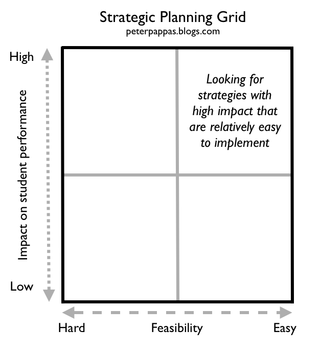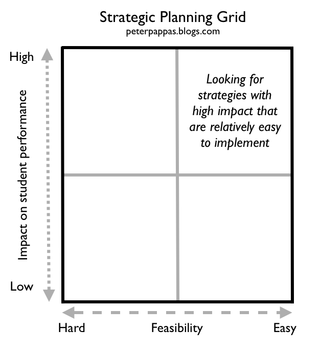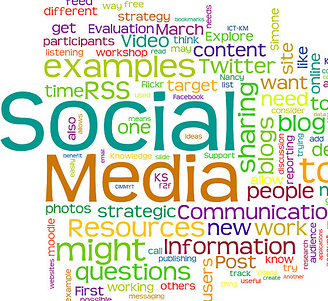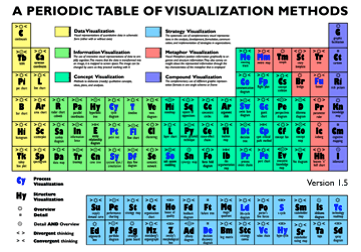Congratulations to Karen Rose and her 3rd grade class from the Melissa, Texas. Selected by attendees at the 2009 National Educational Computing Conference (NECC) as "Best Picture" from among digital shorts produced and edited by students and teachers from across the country.
Motivating Students – A Make and Take Workshop for Teachers
This week I head back to Edison School of Engineering & Manufacturing, to conduct a two day follow up workshop. Our previous work together identified four target areas:
- Motivating students
- Making learning relevant
- Student-centered learning strategies
- Effective use of technology
We are going to start by modeling a “Brainstorm, Group, Label” activity (See Tool 13). It will also set our agenda for the “make and take activities” of the workshop. Day two begins by modeling a “Fishbowl Discussion Group” on the topic of effective next steps. We’ll use the ideas generated in the fishbowl to design a Strategic Planning Grid (below) to prioritize their staff development for the fall.
Most of our time over the two days will be spent assisting teachers in designing specific lessons. I’ve assembled some Literacy Strategies that teachers can use as starting points for modify their existing lessons.
“Non-readers” for students who lack decoding skills.
“Word-callers” for students who can decode, but lack comprehension skills.
“Turned-off readers” for students who have the decoding and comprehension skills, but lack motivation or engagement.
I’ll also be showcasing some web tools that are very engaging for students.
Wordle (text analysis)
Many Eyes (data and text visualizations)
Prezi (presentation tool)
Dipity (timeline builder)
Bubbl.us (brainstorming)
Flickr Tag Related Tag Browser (image tag analysis)
Engage Student Discussion: Use the Social Network in Your Classroom

social media
“UT Dallas History Professor Dr. Monica Rankin, wanted to know how she could reach and include more students in the class discussion. She had heard of Twitter… The following is a short video describing her “Twitter Experiment” in the classroom with comments from students about the pros and cons of Twitter in a traditional learning environment.” (Filmed by UT grad student kesmit3.) Link to notes on the experiment.
Physics Department Innovates with Student-Centered Approach
At M.I.T., two introductory courses are still required — classical mechanics and electromagnetism — but today they meet in high-tech classrooms, where about 80 students sit at 13 round tables equipped with networked computers.
Instead of blackboards, the walls are covered with white boards and huge display screens. Circulating with a team of teaching assistants, the professor makes brief presentations of general principles and engages the students as they work out related concepts in small groups.
Teachers and students conduct experiments together. The room buzzes. Conferring with tablemates, calling out questions and jumping up to write formulas on the white boards are all encouraged.
“There was a long tradition that what it meant to teach was to give a really well-prepared lecture,” said Peter Dourmashkin, a senior lecturer in physics at M.I.T. and a strong proponent of the new method. “It was the students’ job to figure it out.”
The problem, say Dr. Dourmashkin and others in the department, is that a lot of students had trouble doing that. The failure rate for those lecture courses, even those taught by the most mesmerizing teachers, was typically 10 percent to 12 percent. Now, it has dropped to 4 percent.
… The traditional 50-minute lecture was geared more toward physics majors, said Eric Mazur, a physicist at Harvard who is a pioneer of the new approach, and whose work has influenced the change at M.I.T.
“The people who wanted to understand,” Professor Mazur said, “had the discipline, the urge, to sit down afterwards and say, ‘Let me figure this out.’ ” But for the majority, he said, a different approach is needed.
“Just as you can’t become a marathon runner by watching marathons on TV,” Professor Mazur said, “likewise for science, you have to go through the thought processes of doing science and not just watch your instructor do it.”




